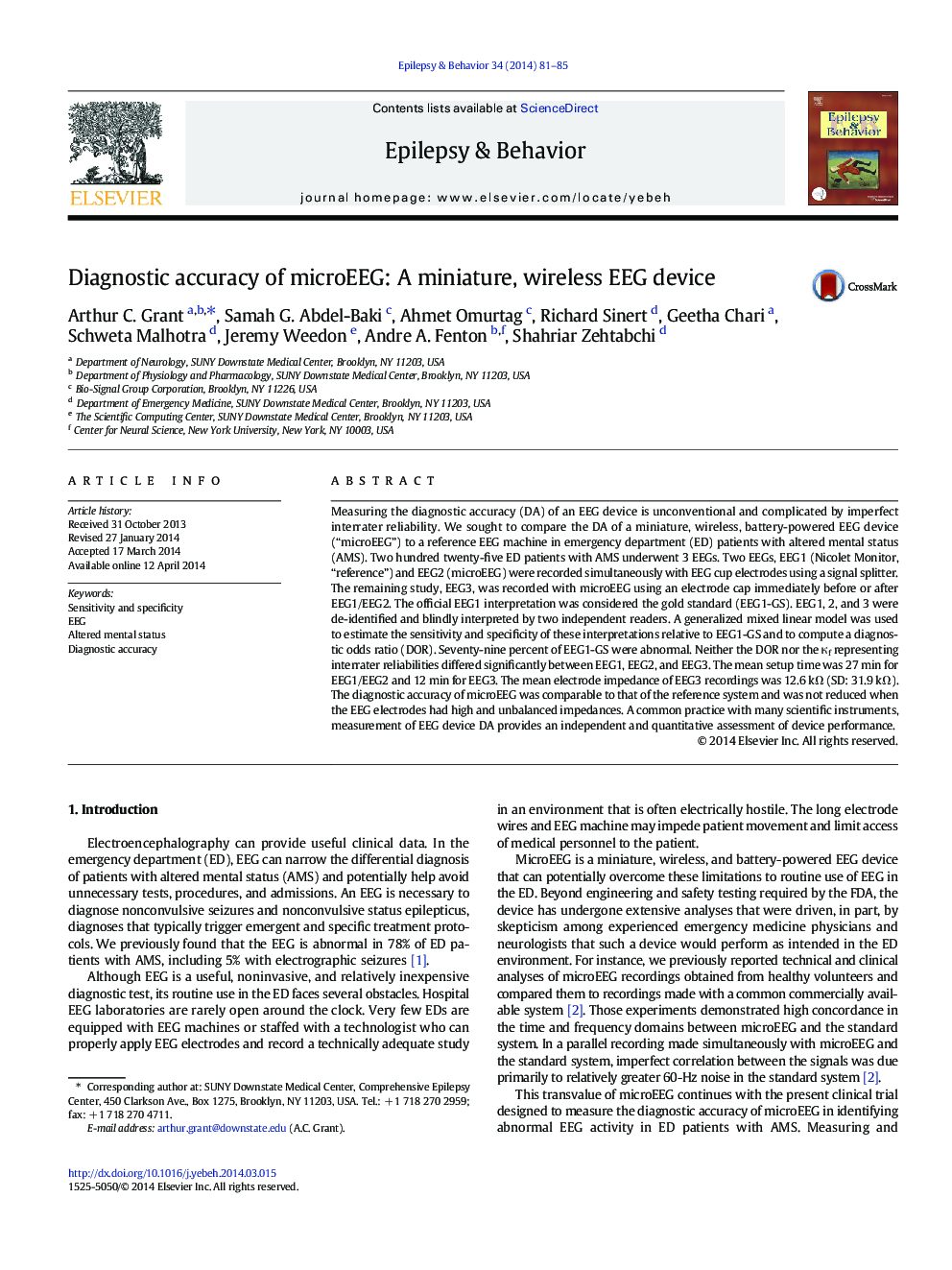| Article ID | Journal | Published Year | Pages | File Type |
|---|---|---|---|---|
| 6012345 | Epilepsy & Behavior | 2014 | 5 Pages |
Abstract
Measuring the diagnostic accuracy (DA) of an EEG device is unconventional and complicated by imperfect interrater reliability. We sought to compare the DA of a miniature, wireless, battery-powered EEG device (“microEEG”) to a reference EEG machine in emergency department (ED) patients with altered mental status (AMS). Two hundred twenty-five ED patients with AMS underwent 3 EEGs. Two EEGs, EEG1 (Nicolet Monitor, “reference”) and EEG2 (microEEG) were recorded simultaneously with EEG cup electrodes using a signal splitter. The remaining study, EEG3, was recorded with microEEG using an electrode cap immediately before or after EEG1/EEG2. The official EEG1 interpretation was considered the gold standard (EEG1-GS). EEG1, 2, and 3 were de-identified and blindly interpreted by two independent readers. A generalized mixed linear model was used to estimate the sensitivity and specificity of these interpretations relative to EEG1-GS and to compute a diagnostic odds ratio (DOR). Seventy-nine percent of EEG1-GS were abnormal. Neither the DOR nor the κf representing interrater reliabilities differed significantly between EEG1, EEG2, and EEG3. The mean setup time was 27 min for EEG1/EEG2 and 12 min for EEG3. The mean electrode impedance of EEG3 recordings was 12.6 kΩ (SD: 31.9 kΩ). The diagnostic accuracy of microEEG was comparable to that of the reference system and was not reduced when the EEG electrodes had high and unbalanced impedances. A common practice with many scientific instruments, measurement of EEG device DA provides an independent and quantitative assessment of device performance.
Related Topics
Life Sciences
Neuroscience
Behavioral Neuroscience
Authors
Arthur C. Grant, Samah G. Abdel-Baki, Ahmet Omurtag, Richard Sinert, Geetha Chari, Schweta Malhotra, Jeremy Weedon, Andre A. Fenton, Shahriar Zehtabchi,
